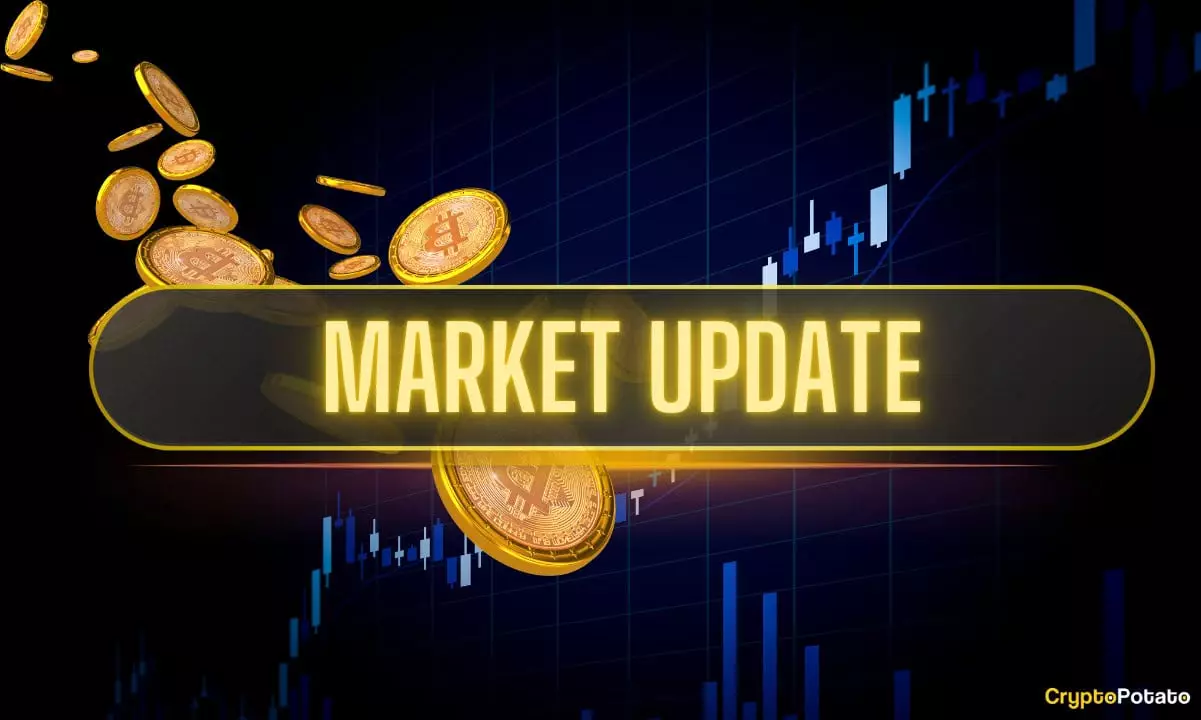In the past week, the cryptocurrency market experienced a wave of apparent euphoria, driven by record-breaking price surges and legislative approvals. Bitcoin’s climb to nearly $123,000 appeared to be the culmination of relentless bullish momentum, feeding narratives of unstoppable growth. However, beneath this veneer of success lies a sobering truth: the underlying vulnerabilities of the crypto ecosystem are far from resolved. This rally, while impressive on the surface, risks blinding investors to the inherent instability and systemic issues that threaten long-term stability.
Many enthusiasts and industry insiders are quick to celebrate these rallying cries as validation of cryptos’ transformational potential. Still, they dismiss critical signs of overvaluation—fueled by speculative fervor rather than sound economic fundamentals. The recent volatility, which saw Bitcoin price retrace by several thousand dollars after hitting an all-time high, signals that the market remains fragile. Such sharp corrections are not mere technical hiccups; they are a symptom of an overheated asset class that could easily spiral into a larger correction once the euphoria subsides. Relying solely on short-term price movements as indicators of health is a dangerous complacency that could leave investors exposed.
The Illusion of Decentralization and Regulatory Certainty
While legislative gestures like the US passing new bills seemingly bolster confidence, these measures are superficial in addressing the deeper issues of market oversight and systemic risks. Instead of genuine regulatory clarity, what we observe is a patchwork of vague laws that can be leveraged in ways that serve entrenched financial interests rather than protect investors or prevent market abuse.
Furthermore, the notion that these legislative developments will usher in a new era of mainstream stability is optimistic at best. Regulatory environments remain volatile and unpredictable, especially given the sheer scale of market manipulation, wash trading, and the prevalence of speculative behaviors. The recent inflows into ETFs and the apparent institutional interest mask an underlying betting frenzy that, like a house of cards, could collapse if regulatory crackdowns intensify or if market sentiment shifts dramatically. The myth of a transparent and fair cryptocurrency landscape persists more in rhetoric than reality.
The Tech Bubble in Disguise
The recent surge in altcoins like Ripple, Ethereum, and others might appear to be a sign of widespread innovation and adoption. Still, it could just as easily be a manifestation of a tech bubble, similar to the late 1990s dot-com craze. These rapid price increases are predominantly driven by hype, media hype, and institutional inflows chasing quick profits, rather than sustainable technological progress or fundamental utility.
Ripple’s market cap soaring past giants like Uber and Boeing is emblematic of how a narrative-driven market can distort reality. In truth, these figures often lack the tangible revenue streams or future cash flows that justify such valuation footprints. Instead, they reflect investor greed and a willingness to chase momentum, disregarding the very risks that history has shown can lead to catastrophic crashes.
The Mirage of Security and Stability
Despite optimism around technological advancements and institutional participation, there are critical warnings from developers about Bitcoin’s security vulnerabilities—specifically, its susceptibility to quantum computing attacks. The call for urgent upgrades highlights that the infrastructure we rely on is not invulnerable but, in fact, increasingly vulnerable to sophisticated threats. It’s a stark reminder that stability is an illusion; today’s seemingly impregnable cryptos could be rendered worthless if these technological gaps are exploited.
Meanwhile, big players like Michael Saylor continue to amass massive Bitcoin holdings, seemingly confident in the resilience of their investments. This accumulation might appear strategic, but it also adds to the systemic risk. Concentrated holdings by corporate actors create a fragile oligopoly prone to market shocks—if these whales decide to offload their assets en masse, the repercussions could be disastrous. The current bullish climate may serve the interests of those with significant stakes, but it does little to reassure the average investor about long-term security.
The Myth of Democratic Innovation
Another alarming aspect of this rally is how the discourse often paints crypto as a democratizing force—an open system for all. Yet, the truth is far more nuanced. Wealthy institutional players, hedge funds, and well-funded projects are the ones capturing most benefits, while ordinary retail investors are left to chase the fleeting gains. The so-called innovation is too often a facade for wealth redistribution upward rather than a genuine democratization of finance.
As regulations tighten and larger firms dominate the space, the gap between elite adopters and grassroots participants will only widen. This growing inequality undercuts the foundational promise of decentralization and raises questions about whether the current rally is more about the interests of the few at the expense of the many. If anything, recent events expose how crypto, in its current state, is increasingly becoming a playground for the well-connected rather than an inclusive financial revolution.
The Underlying Danger: A False Sense of Security
In the end, the recent upward trajectory of cryptocurrency prices, while eye-catching, should serve as a wake-up call for skeptics and believers alike. The market’s resilience is not an endorsement of its stability or long-term viability; it is a reflection of an overheated speculative environment teetering on the brink of collapse. The real danger lies in blind faith — investors assuming that rising prices mean a secure or sustainable future. In truth, this rally is a mirage, obscuring fundamental flaws that could lead to an inevitable correction or worse.
The internet’s early days offer a stark warning: bubbles may burst and tech can fall just as fast as it rises. Cryptocurrencies are no exception. Instead of celebrating fleeting record highs, we should scrutinize the systemic vulnerabilities, regulatory uncertainties, and technological threats that underpin this seemingly unstoppable bull run. Only then can we hope to understand whether this surge is a genuine leap forward or merely an illusion of prosperity masking impending danger.
















Leave a Reply